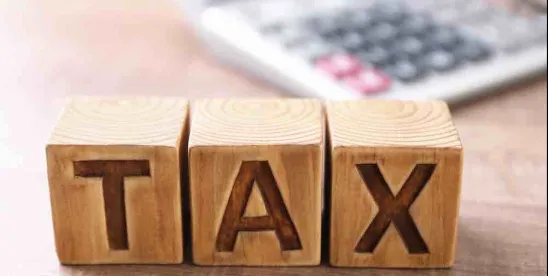On May 18, 2025, the House Budget Committee approved the legislation entitled, “The One, Big, Beautiful Bill” (the “House Bill”). The bill is expected to be revised by the House Rules Committee before being sent to the House floor for a vote.
The House Bill extends a number of provisions from the 2017 Tax Cuts and Jobs Act (“TCJA”) and enacts a number of new provisions. The following is a summary of some of the key provisions from the currently available version of the House Bill:
Business Provisions:
- 163(j) Deductions. The definition of “adjusted taxable income” under section 163(j) is based on EBITDA (which is more favorable for taxpayers than EBIT under current law) for taxable years 2025 to 2028.
- Section 199A. The deduction for qualified business income under Section 199A is increased to 23% (from 20%) for an effective rate of 28.49% (from 29.6%) and made permanent. Section 199A is also expanded to apply to the portion of dividends representing net interest income paid by a “business development company” (“BDC”) taxable as a regulated investment company. This expansion will reduce the effective rate of interest income earned through a BDC from 37% to 28.49% and will increase the attractiveness of BDCs as vehicles for credit funds. Dividends from real estate investment trusts (“REITs”) have had the benefit of Section 199A deductions.
- GILTI Provisions Made Permanent. The global intangible low-taxed income (“GILTI”) and foreign-derived intangibles income (“FDII”) provisions are made permanent at the current rate of 10.5% (instead of increasing to 12.5% after 2025).
- BEAT Made Permanent at Lower Rate. The current tax rate on the base-erosion and anti-abuse tax (“BEAT”) is made permanent at the current rate of 10.5% (instead of increasing to 12.5% after 2025).
- Qualified Production Property Deductions. Taxpayers can deduct 100% of “qualified production property” costs immediately for certain newly constructed or acquired nonresidential real property in the United States. These properties must be in connection with the manufacturing, agricultural and chemical production, or refining of a qualified product.
- Opportunity Zones Reestablished. A second round of Opportunity Zones (“OZs”) are established for taxable years 2027 through 2033, with similar but modified benefits in temporary deferral of capital gains taxes, basis step-up, and exclusion of taxable income on new gains. The first round of OZs is set to expire in 2026. There is a greater focus on rural areas, such as the offer of higher basis step-up of 30% for investments in qualified rural opportunity funds (as opposed to 10% from the first round of OZs).
- Limitation for Qualified Depreciable Property Deductions. The deduction limitation from qualified depreciable property as business assets is increased to $2.5 million (from $1 million). The phase-out threshold is raised from $2.5 million to $4 million.
- Deduction for Excessive Employee Compensation. An aggregation rule is added to the 162(m) limitation for executive compensation so that compensation paid by all entities within a covered corporation’s “controlled group” is counted for purposes of the $1 million limit.
- Limitation of Amortization Deductions for Sports. The 15-year amortization of a professional sports franchise and related intangible assets is limited to 50% of the adjusted tax basis of those assets. This change is effective for assets acquired after the date of the enactment of the tax legislation. Please see this blogpost for more information..
- Excess Business Losses Extended. The limitation on excess business losses for noncorporate taxpayers is made permanent and are carried forward to future taxable years. The maximum amount of business loss taken in a year is based on an inflation adjusted threshold, with $313,000 for single filers and $626,000 for joint filers in 2025.
- Charitable Donation Limitation. A C corporation’s charitable contributions are subject to a 1% floor.
- Increased Taxes on Residents of Countries Imposing a UTPR. The individuals, entities, and governments of countries that impose an undertaxed profits rule (“UTPR”), digital services tax, diverted profits tax, and, (subject to regulations) an extraterritorial tax, discriminatory tax, or any other “unfair” foreign tax enacted with a public or stated purpose that the tax will be economically borne, directly or indirectly, disproportionately by U.S. persons are subject to an increased rate of U.S. taxes, generally increased by 5% for each year of the unfair foreign tax up to 20% maximum.
- Clean Energy Credits Rolled Back. The IRA clean electricity tax credit will begin to phase out after 2028 and finish by the end of 2031, including clean electricity production tax credits, clean electricity investment tax credits, and nuclear electricity production tax credits. Hydrogen production credits will be repealed for facilities beginning construction after 2025.
- Taxable REIT Subsidiary Asset Test. Taxable REIT subsidiaries may represent 25% of the value of the REIT’s total assets (rather than 20% under current law).
- No Carried Interest Provision. There is no provision affecting carried interest.
Tax-Exempt Provisions
- Increased Excise Tax on Private University Endowments and Private Foundations. The current 1.4% excise tax on net investment income of private colleges and universities is replaced with a tiered system based on an institution’s “student-adjusted endowment”. For such schools with a student-adjusted endowment of more than $2 million, the excise tax is increased to 21%. The scope of “net investment income” would also be expanded. Additionally, the current 1.39% excise tax on private foundations is replaced with a tiered system based on the foundation’s total size of assets. For purposes of calculating a private foundation’s assets for purposes of this test, the assets of certain related organizations are treated as assets of the private foundation. The excise tax rate would be 5% for private foundations with gross assets of at least $250 million but less than $5 billion, and 10% for private foundations with gross assets equal to or more than $5 billion.
- UBTI for qualified transportation fringe benefits. UBTI is increase by any amount incurred for any qualified transportation fringe benefit or any parking facility that is not directly connected to any unrelated trade or business that is regularly carried on by the organization.
- Tax on Excessive Employee Compensation. The $1 million limit applies to any employee or former employee of a tax-exempt organization, and for purposes of determining the $1 million limit, all compensation paid to a related person (including a related taxable entity) is included. The change applies to taxable years beginning after December 31, 2025.
- For more information on provisions that affect tax–exempt taxpayers, please see this blogpost.
Individual Provisions
- Ordinary Income Tax Rates. The maximum rate of 37% for individuals is made permanent.
- Standard Deductions. For tax years of 2025 to 2028, the standard deduction is increased to $26,000 for joint filers (from $24,000), to $19,500 for head of household filers (from $18,000), and to $13,000 for all other filers (from $12,000).
- Personal Exemption Elimination. Thepersonal exemption is repealed permanently.
- Section 199A. As mentioned above, the deduction for qualified business income is increased to 23% for an effective rate of 28.49% and made permanent. Individuals may also benefit from these lowered effective rates for dividends representing net interest income from BDCs.
- Itemized Deduction Limits. Itemized deductions (which were disallowed under the TCJA) are allowed and made permanent and the “Pease rule”,whichitemized deductions, is replaced by a rule that reduces itemized deductions by 2/37 of the lesser of 1) the amount of itemized deductions and 2) the amount of taxable income of the taxpayer for the taxable year that exceeds the dollar amount at which the 37% bracket begins with respect to such taxpayer (the 37% bracket begins at $751,600 for married couples filing joint returns in 2025). Effectively, this rule creates an additional 39% tax bracket equal to itemized deductions in excess of the 37% bracket threshold.[1]
- SALT Deduction Cap Increased; SALT Denied for Various Service Professionals. The SALT deduction cap is made permanent and raised to $30,000, going down to $10,000 at a rate of 20% beginning at income of $200,000 for single filers and $400,000 for joint filers. Certain House Republicans voted no during the House Budget Committee vote as they support raising the cap significantly. Pass-through entity tax (“PTET”) deductions are denied for individuals who perform services in the fields of health, law, accounting actuarial science, performing arts, consulting, athletics, financial services, brokerage services, investing services, investment management services, and trading or dealing in securities, partnership interests, or commodities, or any trade or business where the principal asset of such trade or business is the reputation or skill of one or more of its employees. Therefore, under the House Bill, asset managers who are partners in partnerships will not be permitted to deduct their share of state and local taxes. In addition, the House Bill seems to disallow deductions for taxes imposed on the partnership (such as the New York City unincorporated business tax. Please see this blogpost for more information.
- Deductions for Tips. Taxpayers earning $160,000 or less in 2025 (adjusted in the future for inflation) are permitted a deduction for cash tips from an occupation that “traditionally and customarily received tips” to the extent the gross receipts of the taxpayer from the trade or business of receiving the tips exceeds the sum of the cost of goods sold allocable to the receipts and other expenses, losses, or deductions properly allocable to those receipts. This deduction is allowed for tax years 2025 through 2028.
- Overtime Compensation Deductions. Deductions are allowed for overtime compensation for itemizers and non-itemizers for tax years 2025 through 2028.
- Deductions for Car Loan Interest. Deductions (up to $10,000) of interest payments on car loans from 2025 through 2028. These deductions are allowed for itemizers and non-itemizers. The deduction phases out for single taxpayers earning $100,000 ($200,000 for joint returns).
- Expansion of Childcare Credits. Employer-provided childcare credits are further expanded from 25% to 40% (and up to 50% for eligible small businesses). The maximum annual credit is also increased from $150,000 to $500,000 for employers (up to $600,000 for eligible small businesses).
- Family and Medical Leave Credits Expanded. Employer-provided paid family and medical leave credits are expanded by giving employers the option to choose between credit paid for wages paid during the employee’s leave or credit for insurance premiums paid on policies that provide paid leave. The family and medical leave cannot be already mandatory from state and local laws.
- Adoption Tax Credits. Up to $5,000 of adoption tax credits are refundable, which makes the credit available to lower-income families who do not earn sufficient income to pay tax.
- Scholarship-Granting Tax Credits. Tax credits are allowed for contributions by individuals to scholarship-granting organizations. The credits may not exceed the greater of 10% of the taxpayer’s adjusted gross income for the taxable year, or $5,000.
- Expansion of Qualified Tuition Programs. Qualified tuition programs that are exempt from federal tax are expanded to include tuition and material expenses for elementary, secondary, and home school expenses. Qualified higher education expenses are also expanded to include tuition and expenses in connection with a recognized postsecondary credential program.
- Extension of Increased Alternative Minimum Tax Exemption from TCJA. The increased exemptions and increased exemption phase-outs from the individual alternative minimum tax are made permanent.
- The $750,000 Limitation on Qualified Residence Interest Deduction Is Made Permanent. The $750,000 limitation on deductions for qualified residence interest is made permanent.
- Personal Casualty Loss Relief Further Extended. The requirement that personal casualty loss deductions exceed 10% of adjusted gross income for taxpayers to benefit from deductions is waived for qualified disasters that occurred between December 2019 until 2025 (extended from 2020) and allows taxpayers to claim both a standard deduction and qualified disaster-related personal casualty losses.
- Qualified Bicycle Commuting Reimbursements Are Taxable. Reimbursements of bicycle commuting expenses are subject to income tax. Before the TCJA, the reimbursements were not taxable.
- Reimbursements for Personal Work-Related Moving Expenses Are Taxable. Before the TCJA, deductions were given to certain personal moving expenses for employment purposes and gross income did not include qualified moving expense reimbursements from employers. The deductions are permanently repealed, and the reimbursements are permanently taxable.
- Student Loan Discharged on Death or Disability Made Tax-Free Permanently. Discharged student loans on the account of death or disability is extended permanently.
- Child Tax Credits Made Permanent. The child tax credit is made permanent, and the maximum child tax credit is temporarily increased to $2,500 (from $2,000) from 2025 to 2028 (subsequent years will be $2,000). Social security numbers for the child will be required to qualify for child tax credit benefits.
- Creation of “MAGA” Accounts. Money Account for Growth Advancement (“MAGA”) accounts are tax-exempt trust accounts that can be created for U.S. citizens under age 18. The funds from the MAGA accounts can be used for qualified expenses of the beneficiary such as higher education and first-time home purchases. The House Bill provides a one-time $1,000 federal credit per eligible child born between 2025 and 2028, which will be deposited directly into the child’s MAGA account.
[1] Assume a married couple filing jointly has taxable income of $851,600 ($100,000 more than the 37% bracket threshold and a charitable deduction of $100,000 (and no other itemized deductions). The House Bill reduces the couple’s deduction by $5,405.41 (2/37*$100,000) and increases the couple’s tax bill by $2,000 ($5,405.41*37%, which is equal to an additional 2% tax (i.e., total of 39%) on the couple’s incremental $100,000 over the 37% bracket threshold.
Seo Kyung (Rosa) Kim, Martin T. Hamilton, Christine Harlow, Muhyung (Aaron) Lee & Amanda H. Nussbaum also contributed to this article.








 />i
/>i
